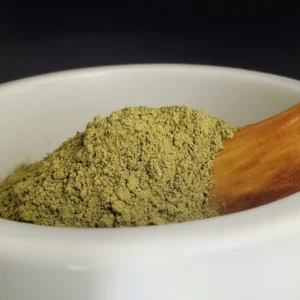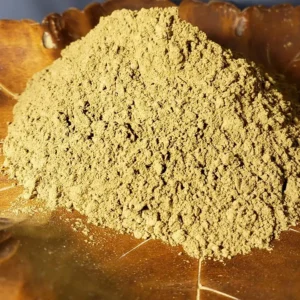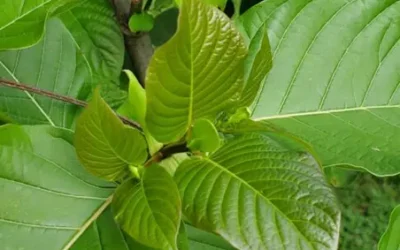Soil and Environmental Factors Influencing Kratom Phenotypes in Indonesia and Thailand
Kratom (Mitragyna speciosa) is a tropical tree native to Southeast Asia, where it has been used for centuries for its stimulant and relaxing properties. The primary regions for kratom cultivation are Indonesia and Thailand, each offering distinct environmental conditions that significantly impact the growth and characteristics of kratom strains.
The observable traits of kratom, such as leaf size, alkaloid content, and overall potency, result from complex interactions between the plant’s genotype and the environment in which it grows. In this expanded analysis, we’ll explore how the soil composition, climate, and other environmental factors in Indonesia and Thailand contribute to the distinct kratom phenotypes strains.
1. Soil Composition and Nutrient Availability
Indonesia: The Richness of Volcanic Soil
Indonesia’s archipelago is home to numerous active and dormant volcanoes, particularly in regions like Borneo, Sumatra, and Java. The volcanic activity in these areas has resulted in soil that is rich in minerals essential for plant growth. Volcanic soil is known for its fertility, containing high levels of nutrients such as magnesium, calcium, potassium, and phosphorus. These nutrients play a crucial role in the development of robust kratom trees.

Green Indo kratom powder batch 15509 raw powder in bowl.
- Mineral Content: Magnesium and calcium are vital for photosynthesis and cell wall development, leading to healthier and more vigorous plants. Potassium plays a key role in regulating water uptake and enzyme activation, which can enhance the alkaloid synthesis in kratom leaves. Phosphorus is critical for energy transfer and root development, allowing kratom trees in Indonesia to establish strong root systems that support nutrient uptake and overall plant health.
- Organic Matter: The warm and humid climate of Indonesia promotes the rapid decomposition of organic material, leading to high humus content in the soil. Humus-rich soil improves soil structure, water retention, and nutrient availability, creating an optimal environment for kratom trees. This high organic matter content supports the production of alkaloid-rich leaves, contributing to the potency and effectiveness of strains like Indo, Bali, and Borneo kratom.
Thailand: The Variability of Sandy Loam and Clayey Soil
Thailand’s soil composition is more variable, with different regions offering a mix of sandy loam, clay, and lateritic soils. Sandy loam, common in the southern and central regions of Thailand, provides good drainage and aeration, which can influence the growth patterns and alkaloid profiles of kratom trees. Clayey soils, which are more prevalent in the northern regions, offer high water retention but can become compacted, affecting root development and nutrient uptake.

Red Thai Kratom Powder Batch 150105 raw kratom powder displayed.
- Drainage and Water Stress: Sandy soils in Thailand allow for excellent drainage, reducing the risk of waterlogging but also subjecting kratom trees to periodic water stress during dry seasons. This stress can trigger the production of secondary metabolites, including alkaloids, as a defense mechanism, potentially enhancing the stimulant effects of Thai kratom strains.
- Nutrient Variability: The nutrient content in Thai soils varies significantly based on the region. In areas with less organic matter, the availability of key nutrients like nitrogen and phosphorus may be lower, influencing the growth rate and alkaloid production of kratom trees. This variability can result in a wider range of phenotypic expressions among Thai kratom strains, contributing to their unique profiles.
2. Environmental Conditions and Their Impact on Kratom Growth – Kratom Phenotypes
Indonesia: Consistent Tropical Climate
Indonesia’s climate is characterized by high humidity, consistent rainfall, and stable temperatures, creating a lush environment for kratom cultivation. These conditions support year-round growth and allow kratom trees to reach their full potential, both in terms of size and alkaloid content.
- Humidity and Rainfall: The consistent rainfall in Indonesia ensures that kratom trees receive a steady supply of water, essential for their growth and the synthesis of alkaloids. High humidity levels help maintain turgor pressure in plant cells, promoting large, broad leaves with a high surface area for photosynthesis. This contributes to the production of more mitragynine, the dominant alkaloid in kratom phenotypes, which is responsible for the sedative effects often associated with strains like Indo and Bali.
- Temperature Stability: The lack of extreme temperature fluctuations in Indonesia allows kratom trees to grow without the stress that might otherwise limit their development. Stable temperatures contribute to a consistent growth rate and alkaloid production, ensuring that Indonesian kratom phenotypes strains maintain their characteristic potency and effects.
Thailand: Seasonal Climate and Microclimates
Thailand experiences more pronounced seasonal changes, with distinct wet and dry periods. This seasonal variability influences the growth cycle of kratom trees and can lead to significant differences in alkaloid content and overall strain characteristics.
- Wet and Dry Seasons: During the wet season, abundant rainfall promotes rapid growth and the development of large leaves. However, the dry season introduces a period of water stress, which can enhance the concentration of certain alkaloids as the plant shifts its metabolism to cope with the lack of water. This stress-induced alkaloid production is thought to contribute to the stimulating effects often associated with Thai kratom phenotypes strains.
- Microclimates: Thailand’s varied topography, including mountainous regions and coastal plains, creates diverse microclimates that can further influence kratom phenotypes. For example, kratom trees grown in the cooler, high-altitude regions may produce different alkaloid profiles compared to those grown in warmer, lowland areas. This variation contributes to the wide range of effects and potency observed in different Thai kratom strains.
3. Phenotypic Traits Influenced by Soil and Environmental Factors
Alkaloid Content and Potency
The concentration and composition of alkaloids in kratom leaves are among the most critical factors determining the effects of different strains. Alkaloids like Mitragynine and Speciociliatine are primarily responsible for the sedative, analgesic, and stimulant effects of kratom.
- Indonesian Kratom: The fertile, volcanic soils of Indonesia, combined with the stable climate, support the production of high concentrations of mitragynine. This alkaloid is known for its analgesic and sedative properties, making Indonesian kratom strains like Indo and Bali popular for relief and relaxation. The presence of the metabolite 7-hydroxymitragynine, although in lower small concentrations, further enhances these effects.
- Thai Kratom: In contrast, Thai kratom phenotypes strains are often associated with more stimulating effects. This is likely due to the environmental stressors such as water scarcity during the dry season, which can alter the alkaloid profile to include higher levels of mitraphylline and other stimulant alkaloids. The interaction between the plant’s genotype and the specific environmental conditions in Thailand leads to the development of kratom phenotypes strains that are more energizing and mood-enhancing.
Leaf Size, Thickness, and Color
The physical characteristics of kratom leaves, including size, thickness, and color, are also influenced by soil and environmental factors.
- Leaf Size and Thickness: Indonesian kratom phenotypes leaves tend to be larger and thicker, a reflection of the nutrient-rich soil and consistent water supply. Larger leaves have more surface area for photosynthesis, which supports higher alkaloid production. In Thailand, the variability in soil quality and water availability can result in smaller, thinner leaves, especially in regions with sandy or less fertile soils. However, these leaves may still contain a potent alkaloid profile due to the stress-induced metabolic changes.
- Leaf Color: The color of kratom leaves is often used to categorize strains into red, green, and white veins, each associated with different effects. While genetic factors primarily determine leaf color, environmental conditions can influence its expression. For example, increased sunlight exposure in Thailand’s dry season may enhance the expression of red veins, contributing to the popularity of Red Thai kratom for its potent effects.
4. Broader Implications of Soil and Environmental Influences on Kratom Strains
Genotype and Environment Interactions
While the genotype of kratom trees sets the foundation for their potential alkaloid content and other traits, the environment in which they grow plays a crucial role in the expression of these traits. The interaction between genotype and environment results in the phenotypic diversity observed in kratom phenotypes strains from different regions.
- Environmental Adaptation: Kratom trees have likely adapted to the specific environmental conditions of their native regions over time. This adaptation process may include changes in root structure, leaf morphology, and alkaloid production in response to the available nutrients, water, and climate conditions. As a result, kratom phenotypes strains from Indonesia and Thailand exhibit distinct characteristics that reflect their environmental origins.
- Regional Specificity: The unique combination of soil composition, climate, and environmental stressors in each region contributes to the development of region-specific kratom strains. These strains are valued for their consistent effects, whether it’s the potent relaxation offered by Indonesian kratom or the stimulating energy provided by Thai kratom.
Implications for Kratom Cultivation and Use
Understanding the influence of soil and environmental factors on kratom phenotypes is essential for both cultivators and consumers. For cultivators, selecting the right region and optimizing growing conditions can enhance the quality and consistency of kratom strains. For consumers, recognizing the environmental origins of different strains can help in choosing the right kratom product for their needs.
- Cultivation Practices: By replicating the natural conditions of Indonesia and Thailand, cultivators in other regions can potentially produce high-quality kratom with similar alkaloid profiles. This involves careful attention to soil composition, nutrient management, and water supply, as well as selecting the appropriate kratom genotype for the desired effects.
- Consumer Choices: For consumers, the knowledge of how environmental factors influence kratom phenotypes strains can inform their purchasing decisions. Those seeking relaxation and relief might prefer Indonesian kratom strains, while those looking for energy and focus may opt for Thai strains. Understanding the origin and cultivation methods of kratom can also provide insights into its quality and potency.
Conclusion – Kratom Phenotypes
The soil and environmental conditions in Indonesia and Thailand play a fundamental role in shaping the strains of kratom phenotypes. The nutrient-rich volcanic soils and stable climate of Indonesia support the production of potent, alkaloid-rich kratom, while the varied soils and seasonal climate of Thailand contribute to the development of unique, stimulating strains.
These factors, along with the interaction between genotype and environment, result in the diverse range of kratom strains available today, each with its own distinct effects and characteristics. Understanding these influences is key to appreciating the complexity of kratom phenotypes and making informed choices about its cultivation and use.





0 Comments